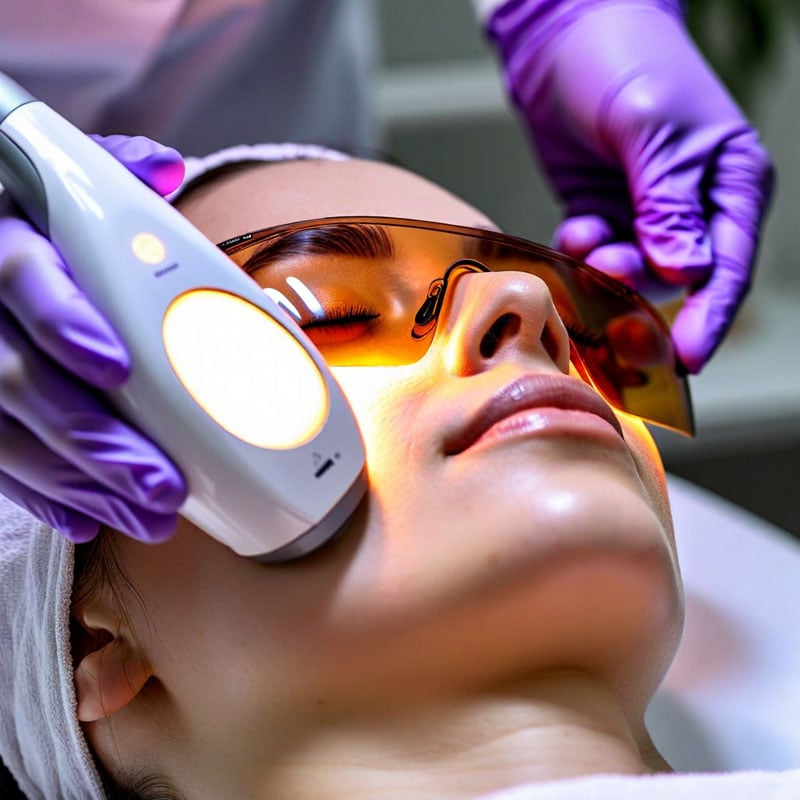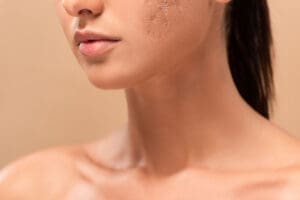What Is IPL?
IPL (Intense Pulsed Light) is a skin treatment that uses broad-spectrum light to target pigment and vascular irregularities in the skin. Unlike lasers, which use a single wavelength of light, IPL emits multiple wavelengths, allowing it to treat various skin issues at once.
It’s often called a “photofacial” and is commonly used on the face, neck, chest, and hands—areas frequently exposed to the sun.
How IPL Works
IPL delivers intense pulses of light into the deeper layers of the skin (the dermis), without damaging the surface (epidermis). The light energy is absorbed by pigmented cells or blood vessels, which are then destroyed and naturally removed by the body over time.
IPL Can Target:
- Melanin (brown pigment): Treats sunspots, age spots, freckles
- Hemoglobin (red pigment): Treats broken capillaries, rosacea, redness
- Sebaceous glands: Helps reduce active acne by shrinking oil production
What IPL Treats
IPL is incredibly versatile. It can improve:
- Sun damage & pigmentation
- Freckles and age spots
- Rosacea and facial redness
- Broken blood vessels & spider veins
- Acne and acne scars
- Enlarged pores
- Uneven skin tone and texture
- Fine lines (to a limited extent)
What to Expect During IPL Treatment
Before the Session:
- Avoid sun exposure, tanning beds, and retinoids for at least 2 weeks
- Remove makeup or skincare products before treatment
- A cooling gel may be applied to the treatment area
During the Procedure:
- You’ll wear protective eyewear
- A handheld IPL device is passed over the skin
- You may feel a warm snapping sensation, like a rubber band flick
- Sessions last 20–45 minutes depending on the area
Aftercare:
- Redness or mild swelling is common, lasting 24–48 hours
- Dark spots may temporarily darken before flaking off
- Use gentle skincare and sunscreen daily
- Avoid hot showers, saunas, and vigorous exercise for 48 hours
Results & Frequency
- Most people need 3 to 5 sessions, spaced 3–4 weeks apart
- Improvement is often visible after the first session, with continued results over time
- Results can last 6 months to a year, with maintenance treatments as needed
IPL Risks & Considerations
IPL is generally safe but not suitable for everyone. Be cautious if you:
- Have darker skin tones (Fitzpatrick IV-VI) – increased risk of hyperpigmentation or burns
- Are pregnant or breastfeeding
- Take photosensitizing medications (e.g., Accutane)
- Have active infections, open wounds, or severe acne
Side effects can include:
- Redness
- Swelling
- Temporary darkening of spots
- Rarely: blistering, scarring, or hypo/hyperpigmentation
Always consult with a certified technician or medical consultant before beginning IPL.



